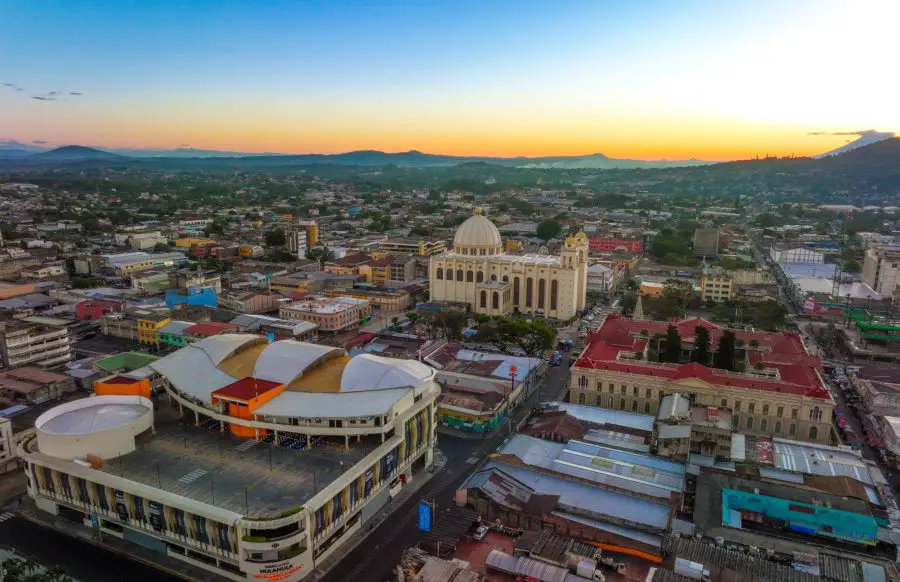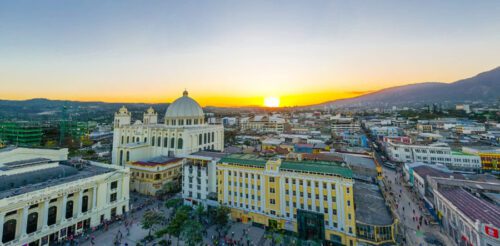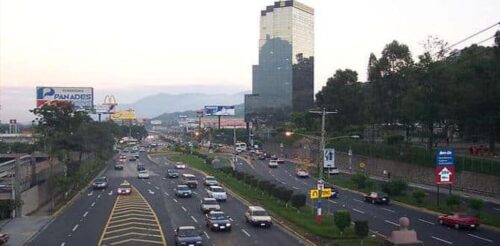
On Christmas Eve, the Rivera family enjoyed the traditional Salvadoran celebrations. The kids set off firecrackers in the streets, the teenagers chatted and texted on the patio, and the adults sipped their drinks and listened to music in the living room. This was a typical Christmas scene in Salvadoran households. Yet, it may be Simeon Rivera’s last Christmas eve with his family for years as he plans to leave El Salvador this year.
The Riveras told Global Voices that it was the first time in over ten years that friends and family who live outside their neighborhood could visit them. A street gang used to control their community and did not allow outsiders to enter. However, things are different now.
According to them, all gang members in their community have either been arrested or are hiding. The family lives in the urban area of Ilobasco, a municipality known for gang and violence issues. For many Salvadorans like Rivera, who have endured 30-plus years of high rates of crime mainly attributed to Salvadoran gangs, December was a particularly festive month.
According to the Salvadoran government, El Salvador ended 2022 with 495 violent murders. Attorney General Rodolfo Delgado said that “we are closing this 2022 as the safest year in the history of El Salvador, which, until recently, seemed impossible.”
Independent journalist Roberto Valencia, who regularly monitors El Salvador’s homicide rate, disagrees with the government’s statistics. He remarked that the government failed to include the deaths of 120 alleged gang members killed in confrontations with the police. According to Valencia, 2022 concluded with 615 homicides.
Yet, even when taking the numbers provided by Valencia, the homicides in El Salvador in 2022 were 74.4 percent less than in 2019, the year when President Bukele came to power. For many, 2022 was the safest year in El Salvador since the end of the civil war in 1992. Even critics of Bukele’s government do not deny the sense of improved security in the country.
With fewer homicides and over 60,000 people arrested under an ongoing state of exception, many Salvadorans feel safer. The Salvadoran government says these are all gang members, but human rights groups dispute this and say many have been arrested arbitrarily.
Even if many individuals and NGOs have accused Salvadoran authorities of human rights violations during its State of Exception, which curtails access to justice for detained people, Rivera and most Salvadorans do not seem to worry or care about these violations. Many continue to approve of the extreme measures taken by the government.
Yet, a lower homicide rate will not stop Salvadorans from leaving the country in 2023. Despite a safer community, Rivera still wants to leave El Salvador. As a farm worker, his economic situation is dire. He told Global Voices:
I want a better life and to provide higher education for my children. For that, I need more money, but I can’t earn it here, so I have no choice but to leave. Los bichos [gang members] are gone! So now I can go and not worry as much about [leaving] my family.” Simeon Rivera.
Economic Concerns
According to the Central American University’s (UCA) latest survey, in December 2022, 63.4 percent of Salvadorans believed that the economy is the problem most affecting the population. Delinquency came second with 12.5 percent, a sharp decline since last year.

Translation: Country’s problem that most affects the population, from a historical perspective. Delinquency, Economy, COVID-19 Pandemic, State of Exception, Other. Source: UCA.
Rivera will have to migrate by illegal means to his desired destination, which he does not want to disclose for security reasons. Since the 1990s, El Salvador has seen hundreds of thousands of its citizens migrate, with many losing their lives during the journey north.
Rivera also wants to avoid Salvadoran authorities questioning him or his wife about human smuggling and financial details about the trip, and fears that gang violence may come back “if human rights organization or the political opposition get their way.”
The economic problem is nothing new and is one of the predominant reasons Salvadorans have left or are leaving the country. Low wages, now coupled with exorbitant inflation (7.32 percent in 2022), are pushing families to the edge of poverty (26.2 percent of the population in 2020).
Salvadoran minimum wages are not enough to cover the basic costs of living, and it is worse for those who work informally or on farms, like Simeon Rivera. Usually, farm workers earn a minimum of $243 — merely three dollars above the cost of basic food necessities in 2023.
“I make about $300 a month working in agriculture and livestock, but many times that is not enough to survive the month,” he says. What remains of Rivera’s salary covers utilities, clothing, medicines, and education supplies for his children.
These figures might worsen this year as the World Bank alerts to a global economic recession. The U.S. economic woes as well as the impact of the Russian war in Ukraine will continue to impact the Salvadoran economy. Also, El Salvador is on track to issue its Bitcoin Volcano bonds in 2023, and this could impact its economy even further.
The International Monetary Fund (IMF) is visiting El Salvador in early 2023 to evaluate the country’s financial situation. The IMF has recommended the removal of Bitcoin as a legal tender; however, the Bukele administration has made it clear that they will keep it, even though most Salvadorans do not use Bitcoin.
How many Salvadorans are leaving the country?
There is no accurate statistic about how many people have left or are leaving El Salvador. Those who migrate illegally do not make it public or let the government know. Journalists usually use the numbers reported by the U.S. Customs and Border Protection of Salvadorans intercepted at the U.S. southern border to estimate migration statistics.
These numbers include Salvadorans captured while clandestinely entering the U.S. as well as those who got into the U.S. and turned themselves to authorities to request asylum. There are many more who migrate to Mexico, Spain, the United Kingdom, and Italy.

Chart showing how many Salvadoran people have been intercepted at the U.S. border. Source: US Customs and Border Protection.
Based on the data provided by the U.S. Customs and Border Protection, more people have left El Salvador during the Bukele administration than during previous governments. In 2021 and 2022, these numbers can also coincide with the start of Biden’s administration after four years of Trump’s governance and lower COVID-19 threats.
There is no exact formula to see if more or fewer Salvadorans are leaving the country. What is certain, however, is that they are still migrating despite improved security.


